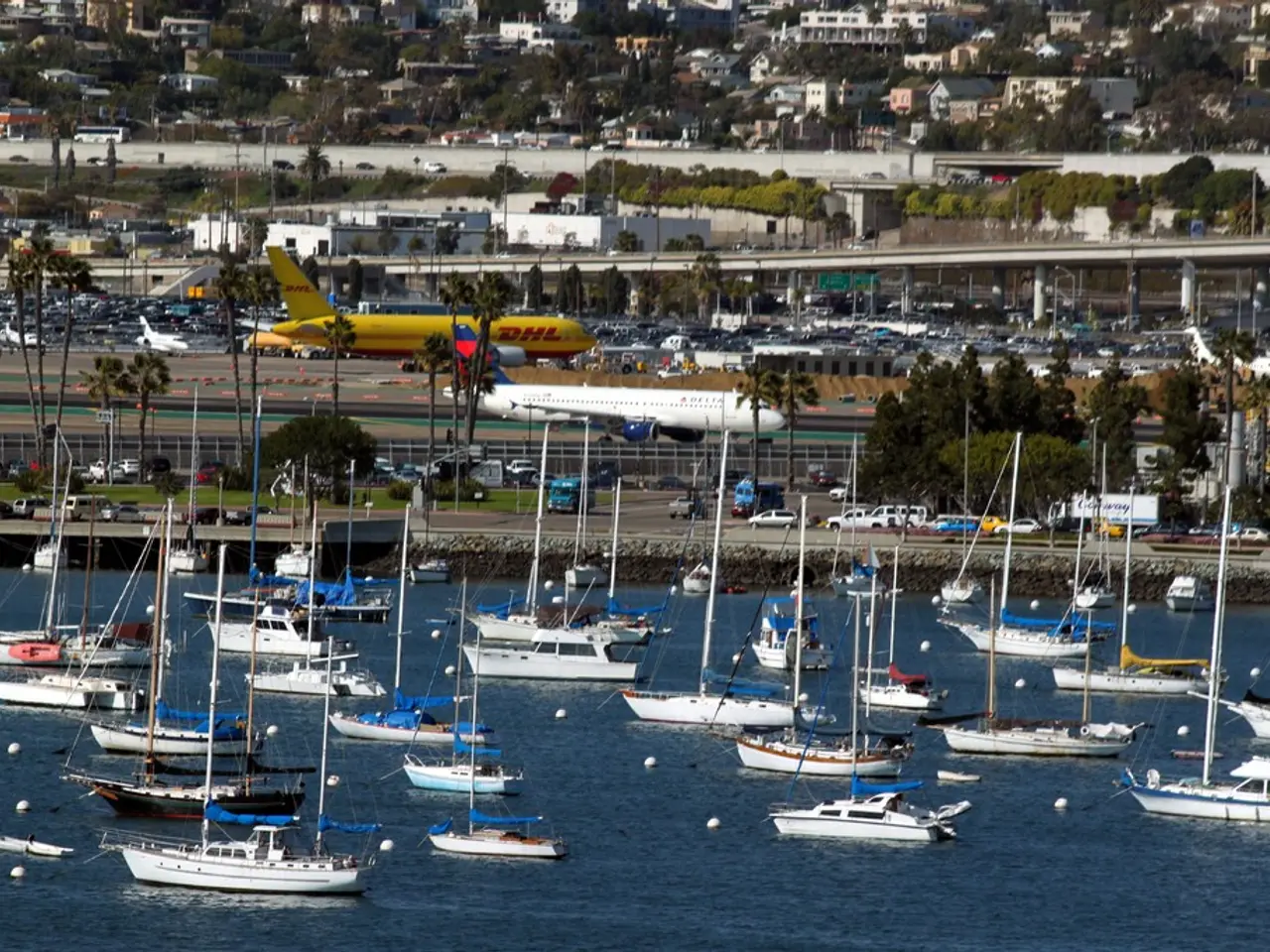Maritime Industry's Impact on the Environment: Crucial Statistics
The maritime sector, responsible for transporting around 80% of global trade annually, is a significant contributor to environmental concerns. Currently, the industry accounts for approximately 3% of global greenhouse gas emissions, a figure that could potentially rise to 17% by 2050 if left unregulated [1][5].
Maritime vessels burn large amounts of fossil fuels, releasing pollutants such as sulphur dioxide, nitrogen oxides, and particulate matter into the air. These emissions have negative consequences not only for human health but also for marine life, particularly marine mammals [2]. Furthermore, the discharge of ballast water by vessels can introduce invasive species into new environments, disrupting local ecosystems.
Without significant changes, shipping emissions are projected to increase by 130% over 2008 levels by 2050, underscoring the need for decarbonization [5]. The maritime sector's growing emissions will play a major role in climate change if not addressed [5].
However, there are measures in place to reduce the carbon footprint and promote sustainability in the maritime sector.
Regulatory and Technological Changes
The International Maritime Organization (IMO) has set ambitious targets, including a 40% reduction in emissions by 2030 and net-zero emissions by 2050. New carbon-intensity benchmarks and a global carbon pricing mechanism are being implemented to drive change [1][5].
Methanol, ammonia, and hydrogen are being explored as alternatives to traditional fuels. Hydrogen, in particular, is seen as a strategic solution due to its zero-emission output [1][5]. Investments in dual-fuel engines and research into sustainable fuels are critical for the transition to cleaner energy sources [1].
Operational and Infrastructure Changes
Using shore-side electricity to power ships at berth can significantly reduce emissions. Subsidies for shore-side electricity can incentivize its adoption [4]. Ports are being upgraded to withstand climate-related challenges, including sea level rise and extreme weather events [1]. Continuous monitoring equipment is being installed to track emissions, and strategies include reducing single-use plastics and restricting incinerator use for plastic disposal [3].
Market-Based Instruments
Economic incentives such as subsidies for cleaner technologies and penalties for non-compliance are being explored to encourage emission reductions [4]. The European Union began regulating emissions from the shipping sector under its trading system in 2023, with shipping companies needing to pay for the carbon they emit traveling to and from the EU and between EU ports by 2026 [4].
To achieve sustainability, the maritime industry should consider improving energy efficiency through routine maintenance, shifting to alternative fuels such as biofuels and hydrogen, adopting sustainable technologies, ditching plastic, enacting incentives for sustainable practices, and working towards total decarbonisation.
Implementing regulations and best practices to prevent accidents, oil spills, and the introduction of invasive species, minimizing noise pollution, and treating ballast water effectively are crucial to minimizing the impact of ocean-going vessels on oceans and waterways.
The gradual and consistent decarbonisation of the maritime industry could spur green growth in various industries around the world by increasing demand, making proper infrastructural investments, fostering industry collaboration, and engaging with governmental organizations. Tackling environmental issues in the maritime industry is essential to ensure a sustainable future for both the industry and the planet.
References:
- BBC News
- The Guardian
- International Maritime Organization (IMO)
- World Economic Forum
- International Energy Agency (IEA)
- In an effort to combat the growing emissions from the maritime sector, which could potentially reach 17% of global greenhouse gas emissions by 2050, the International Maritime Organization (IMO) has set targets for emission reduction, including a goal of net-zero emissions by 2050 [1][5].
- To drive change, the IMO is implementing new carbon-intensity benchmarks and a global carbon pricing mechanism [1][5]. Moreover, investments in dual-fuel engines and research into sustainable fuels, such as hydrogen, are crucial for the transition to cleaner energy sources in the maritime industry [1].
- As part of its commitment to sustainability, the maritime industry should consider adopting economic incentives, such as subsidies for cleaner technologies and penalties for non-compliance, to encourage emission reductions [4]. For instance, the European Union began regulating emissions from the shipping sector under its trading system in 2023, with shipping companies needing to pay for their carbon emissions by 2026 [4].




